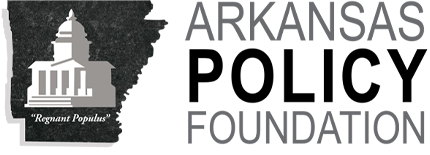“A short-term budgetary link should be established between … CPI and total operational expenditures by agencies.” Efficiency Project, 2016
(November 2019) The Policy Foundation’s Efficiency Project (2015-16) examined multiple variables at state agencies including a Consumer Price Index analysis.1 Spending at nine agencies exceeded CPI from 2009 to 2015.2
Handful of State Agencies Drive Spending
The following chart shows “actual spending” since the Efficiency Project:
| FY 2015 | FY 2017 | |
| Human Services | $7,129,762,956 | $8,119,742,316 |
| Education | $3,457,588,679 | $3,538,856,863 |
| Finance and Administration | $985,935,822 | $936,111,805 |
| Correction | $375,658,284 | $394,693,793 |
| Health Department | $370,387,770 | $297,240,574 |
| Workforce Services | $460,258,462 | $242,408,730 |
| Career Education | $136,641,334 | $143,431,425 |
| Parks and Tourism | $98,584,451 | $104,611,478 |
| Community Correction | $89,680,879 | $103,470,371 |
| Economic Development | $45,589,380 | $85,892,004 |
| Information Systems | $64,801,776 | $67,400,063 |
| Military | $60,832,606 | $62,251,106 |
| Insurance | $57,736,238 | $55,334,248 |
| Environmental Quality | $51,888,439 | $47,234,953 |
| Agriculture | $44,167,159 | $44,993,424 |
| Emergency Management | $39,812,016 | $27,905,617 |
| Higher Education | $13,066,990 | $20,722,787 |
| Veterans Affairs | $11,605,581 | $20,444,445 |
| Heritage | $18,165,321 | $17,982,488 |
| Assessment Coordination | $17,430,818 | $17,547,052 |
| Aeronautics | $9,597,094 | $14,458,696 |
| Bank Department | $7,693,381 | $8,129,524 |
| Labor | $6,486,450 | $6,062,645 |
1 A CPI spending cap incentivizes officials to search for efficiencies in a low-inflation environment. The goal is not unrealistic: operational expenditures declined at 13 agencies between FY 2014 and FY 2015.
2 Community Correction, Correction, Econ. Dev., Education, Environmental Quality, Health, Insurance, Military, Veterans Affairs.
3 FY 2015, https://www.dfa.arkansas.gov/images/uploads/budgetOffice/fy2015ActualExpenditures.pdf (Total Op. Expenditures)
4 FY 2017, https://www.dfa.arkansas.gov/images/uploads/budgetOffice/fy2017ActualExpenditures.pdf (Total Op. Expenditures)
CPI increased 2.6% in the 2015-17 period.5 The following chart shows “actual spending” exceeded6 CPI at 11 state agencies:
| 2015-2017 | ||
| Workforce Services | -47.3% | |
| Emergency Management | -30.0% | |
| Health Department | -19.7% | |
| Environmental Quality | -9.0% | |
| Labor | -6.5% | |
| Finance and Administration | -5.1% | |
| Insurance | -4.2% | |
| Heritage | -1.0% | |
| Assessment Coordination | 0.7% | |
| Agriculture | 1.9% | |
| Military | 2.3% | |
| Education | 2.4% | |
| CPI | 2.6%7 | |
| Information Systems | 4.0% | |
| Career Education | 5.0% | |
| Correction | 5.1% | |
| Bank Department | 5.7% | |
| Parks and Tourism | 6.1% | |
| Human Services | 13.9% | |
| Community Correction | 15.4% | |
| Aeronautics | 50.7% | |
| Higher Education | 58.6%8 | |
| Veterans Affairs | 76.2% | |
| Economic Development | 88.4% | |
| Role of Human Services | ||
| The most significant spending | increase in the period was | at the state |
Department of Human Services, where actual spending was $8.1 billion in FY 2017. Actual Human Services spending increased 13.9% from FY 2015 to FY 2017. The savings to state taxpayers would have exceeded $800 million if Human Services spending had equaled CPI in the period.
5 https://www.bls.gov/cpi/
6 Spending at 12 agencies was less than CPI from 2015 to 2017. Spending was less than CPI at 11 agencies in the 2009-15 period: Aeronautics, Agriculture, Assessment Coordination, Career Education, Emergency Management, Finance and Administration, Higher Education, Heritage, Labor, Parks and Tourism, Workforce Services
7 https://www.bls.gov/cpi/
8 Spending at Institutions of Higher Education increased 3% in the 2-year period.
Effect of CPI Spending Cap
The following chart shows how a CPI spending cap would have saved tax dollars in the two-year period.
Savings
Human Services $804,605,523
Economic Development $39,117,300
Community Correction $11,457,789
Correction $9,268,394
Veterans Affairs $8,537,119
Higher Education $7,316,055
Aeronautics $4,612,078
Parks and Tourism $3,463,831
Career Education $3,237,416
Information Systems $913,441
Bank Department $236,115
Total Savings $892,765,061
Qualifications
Some agencies derive a significant percentage of their funding from the federal government.
The two-year period is a ‘snapshot in time.’ A review over a longer period such as a full business cycle would produce different results.
Conclusion
Arkansas taxpayers would have saved $900 million if CPI had been linked to actual spending from FY 2015 to FY 2017. Policymakers do not possess a time machine but they could generate savings in the future by establishing a CPI spending cap.
— Greg Kaza









